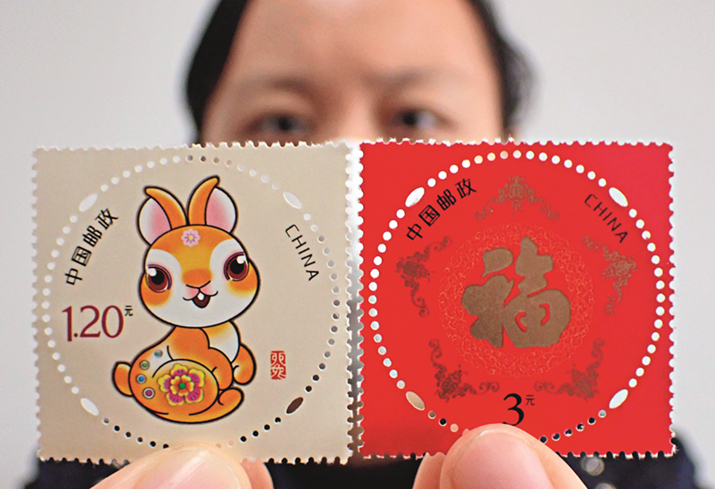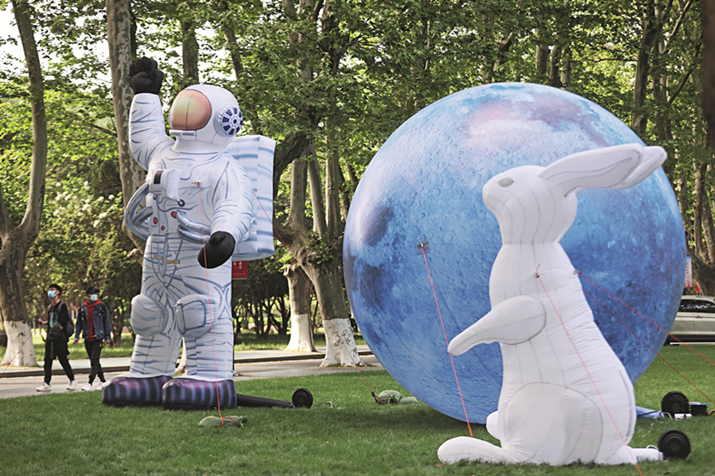Welcoming the Year of the Rabbit
These easy, interesting and catchy Chinese nursery rhymes White Little Rabbit are widely recited by Chinese children:
White little rabbits, white upon white,
Two little ears, standing upright,
Loves eating carrots and some fruit,
Bounce-bounce jump-jump oh so cute!
The Chinese New Year in 2023 rings in the Year of the Rabbit, starting from 22 January and ending on 9 February 2024.
In the Chinese zodiac system, 12 animals represent 12 consecutive years. The rabbit is the fourth of the 12 animals which also include the rat, the ox, the tiger, the dragon, the snake, the horse, the goat, the monkey, the rooster, the dog, and the pig.
If you happen to be born in any of the following years: 2011, 1999, 1987, 1975, 1963, 1951, 1939, 1927..., then you have the rabbit as your Chinese astrological sign. And the Year of the Rabbit is special for you as each Chinese astrological sign is only celebrated in its own year every 12 years.
The rabbit is a symbol of longevity, peace, and propitiousness in Chinese culture, and the Year of the Rabbit is commonly believed to be a peaceful and auspicious year.
Rabbits in mythology
Bugs Bunny or Peter Rabbit may be the most popular rabbits in the world; but for Chinese people, none can compete with the Jade Rabbit, also known as the Moon Rabbit.
In Chinese mythology, the Moon Rabbit is often associated with Chang’e, the Goddess of the Moon.
Legend has it that Chang’e was a beautiful woman married to Houyi the archer, who received the elixir of life and gave it to his wife. Chang’e swallowed the elixir and flew to the Moon. The Moon Rabbit is often portrayed as a companion of Chang’e in the Moon Palace (or the Guanghan Palace), whose duty was to pound medicine in a mortar under a cassia tree.
How did the rabbit get to the Moon? It is said that the Jade Emperor wanted an animal’s help in preparing the elixir of life for immortality. He came down to Earth in the disguise of a famished and frail man and cried out for help and food. Eventually, three animals tried to see if they could help: the monkey, the fox, and the rabbit.
The monkey returned laden with fruits he had gathered from up in the trees. The fox returned with some fish he had caught in a nearby stream. But the rabbit could not find any food for the old man. The rabbit felt sad for being unable to find anything, and chose to offer himself as food, throwing himself into the fire in an ultimate act of selflessness.
As a reward for his bravery, the Jade Emperor sent him off to the Moon to live as the immortal Jade Rabbit.
The Mid-Autumn Festival, an important traditional Chinese festival falling on the 15th day of the eighth lunar month, is also closely related to the Moon and the rabbit. During the festival, people offer sacrifices to the Goddess of the Moon and the Jade Rabbit, wishing for bountiful harvest.
The name Chang’e is also associated with China’s lunar exploration programme. On 2 December 2013, China launched the Chang’e-3 lunar probe with the country’s first Moon rover, marking a significant step towards deep space exploration. The rover’s name was selected in an online poll, and it was called Yutu (Jade Rabbit), presenting a modern scientific version of an ancient Chinese mythology.

The rabbit, with long and fluffy ears, round and watery eyes and puffy tail, symbolises mercy, elegance, and beauty in the Chinese culture.
Also, due to its high rate of reproduction, the rabbit has traditionally been viewed as a lucky animal in China, where people historically believed that more children meant more blessings.
Rabbits are also a symbol of longevity in traditional Chinese culture. Therefore, Chinese people believe that wearing jewellery with Jade Rabbit elements can bless them with good health, safety and longevity.
Besides the divine image, Chinese people regard the rabbit as the embodiment of cleverness. There are many idioms to describe its vigilance and agility, such as dong ruo tuo tu, meaning “as nimble as a rabbit that has broken loose,” and shou zhu dai tu, meaning “people who merely wait for some random stroke of luck instead of making earnest effort to pursue opportunities or what they need.”
In China’s capital Beijing, Tu’er Ye, or the Lord Rabbit, is quite popular as a deity of folk religion.
With a human body and a rabbit’s ears and mouth, Tu’er Ye is not only a local handicraft figurine symbolising happiness and good luck, but also a clay toy favoured by children during traditional festivals.
The rabbit is believed to be a deity on the Moon in charge of health and medicine. As legend has it, Beijing once suffered a plague before the Mid-Autumn Festival. Chang’e dispatched the rabbit to cure the disease.
The craft of making Lord Rabbit clay figurines is one of Beijing’s over 12,000 items of intangible cultural heritage. It was inscribed on the national list in 2014.

Zodiac rabbits’ personality
In traditional Chinese belief, people who share a zodiac sign also share a similar character and temperament. Therefore, people who were born in years of the rabbit share the characteristics of that sign.
According to Chinese astrology, rabbits are gentle, quiet, elegant, and alert as well as quick, skilful, kind, patient, and responsible, sometimes reluctant to reveal their minds to others. They have a tendency to escape reality, but are always faithful to those around them.
Men with rabbit sign are known for always being polite, with a gentle smile that makes people feel that they are credible and sincere. When faced with difficulties, they never give up, but instead remain persistent in their endeavours to find solutions. This means they eventually achieve enviable success. Their female counterparts have pretty appearance, and possess a pure heart.
Related articles
-
 Musical instrument set from ancient Yue Kingdom unearthed in east China
Musical instrument set from ancient Yue Kingdom unearthed in east ChinaMore
-
 Event promoting Hezhe culture held in Harbin
Event promoting Hezhe culture held in HarbinMore
-
 Large-scale public cemetery for Qin people discovered in Shaanxi
Large-scale public cemetery for Qin people discovered in ShaanxiMore
-
 Cultural activities held in Qufu during WIC Nishan Dialogue on Digital Civilization
Cultural activities held in Qufu during WIC Nishan Dialogue on Digital CivilizationMore
-
 China and Kazakhstan have close cultural and artistic exchanges
China and Kazakhstan have close cultural and artistic exchangesMore
-
 How a folk art preserves history and culture
How a folk art preserves history and cultureMore
